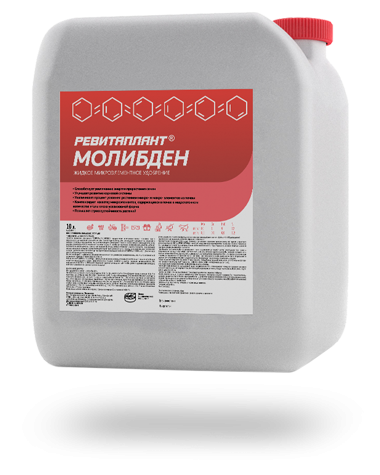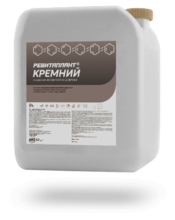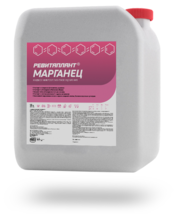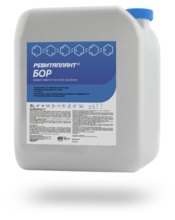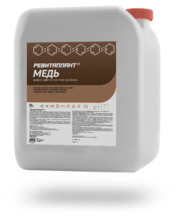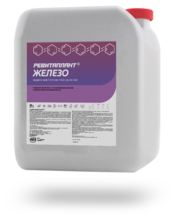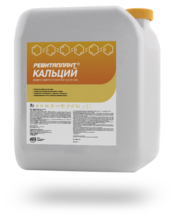Ingredients
Active ingredient content by molecular weight, g/l
Goals / Purpose
| Crop | Input rate | Input stage | Remarks | |
|---|---|---|---|---|
| Crop: | Input rate: 0,1–0,3 l/ha | Input stage: Tillering | Remarks: Remedy of nutrient deficiency, stimulation of nodule bacteria formation at legumes, nitrogen fixation, chlorophyll synthesis boost | Details |
| Crop: | Input rate: 0,1–0,3 l/ha | Input stage: Booting stage | Remarks: Remedy of nutrient deficiency, stimulation of nodule bacteria formation at legumes, nitrogen fixation, chlorophyll synthesis boost | Details |
| Crop: | Input rate: 0,1–0,3 l/ha | Input stage: 1st tier leaves | Remarks: Remedy of nutrient deficiency, stimulation of nodule bacteria formation at legumes, nitrogen fixation, chlorophyll synthesis boost | Details |
| Crop: | Input rate: 0,1–0,3 l/ha | Input stage: Pod formation | Remarks: Remedy of nutrient deficiency, stimulation of nodule bacteria formation at legumes, nitrogen fixation, chlorophyll synthesis boost | Details |
| Crop: | Input rate: 0,1–0,3 l/ha | Input stage: 2-4 leaf pairs | Remarks: Remedy of nutrient deficiency, stimulation of nodule bacteria formation at legumes, nitrogen fixation, chlorophyll synthesis boost | Details |
| Crop: | Input rate: 0,1–0,3 l/ha | Input stage: 6-8 leaf pairs | Remarks: Remedy of nutrient deficiency, stimulation of nodule bacteria formation at legumes, nitrogen fixation, chlorophyll synthesis boost | Details |
| Crop: | Input rate: 0,1–0,3 l/ha | Input stage: Ramification | Remarks: Remedy of nutrient deficiency, stimulation of nodule bacteria formation at legumes, nitrogen fixation, chlorophyll synthesis boost | Details |
| Crop: | Input rate: 0,1–0,3 l/ha | Input stage: Appearance of inflorescences | Remarks: Remedy of nutrient deficiency, stimulation of nodule bacteria formation at legumes, nitrogen fixation, chlorophyll synthesis boost | Details |
| Crop: | Input rate: 0,1–0,3 l/ha | Input stage: 6–7 leaves | Remarks: Remedy of nutrient deficiency, stimulation of nodule bacteria formation at legumes, nitrogen fixation, chlorophyll synthesis boost | Details |
| Crop: | Input rate: 0,1–0,3 l/ha | Input stage: In autumn for winter-sown rapeseed at the phase of foliar rosette creation | Remarks: Remedy of nutrient deficiency, stimulation of nodule bacteria formation at legumes, nitrogen fixation, chlorophyll synthesis boost | Details |
| Crop: | Input rate: 0,1–0,3 l/ha | Input stage: 6–8 leaves | Remarks: Remedy of nutrient deficiency, stimulation of nodule bacteria formation at legumes, nitrogen fixation, chlorophyll synthesis boost | Details |
| Crop: | Input rate: 0,1–0,3 l/ha | Input stage: Budding | Remarks: Remedy of nutrient deficiency, stimulation of nodule bacteria formation at legumes, nitrogen fixation, chlorophyll synthesis boost | Details |
| Crop: | Input rate: 0,1–0,3 l/ha | Input stage: 10-15 cm sprouts | Remarks: Remedy of nutrient deficiency, stimulation of nodule bacteria formation at legumes, nitrogen fixation, chlorophyll synthesis boost | Details |
| Crop: | Input rate: 0,1–0,3 l/ha | Input stage: Leaf development | Remarks: Remedy of nutrient deficiency, stimulation of nodule bacteria formation at legumes, nitrogen fixation, chlorophyll synthesis boost | Details |
| Crop: | Input rate: 0,1–0,3 l/ha | Input stage: Budding | Remarks: Remedy of nutrient deficiency, stimulation of nodule bacteria formation at legumes, nitrogen fixation, chlorophyll synthesis boost | Details |
| Crop: | Input rate: 0,1–0,3 l/ha | Input stage: Before flowering | Remarks: Remedy of nutrient deficiency, stimulation of nodule bacteria formation at legumes, nitrogen fixation, chlorophyll synthesis boost | Details |
| Crop: | Input rate: 0,1–0,3 l/ha | Input stage: After flowering | Remarks: Remedy of nutrient deficiency, stimulation of nodule bacteria formation at legumes, nitrogen fixation, chlorophyll synthesis boost | Details |
| Crop: | Input rate: 0,1–0,3 l/ha | Input stage: Fruit setting | Remarks: Remedy of nutrient deficiency, stimulation of nodule bacteria formation at legumes, nitrogen fixation, chlorophyll synthesis boost | Details |
| Crop: | Input rate: 0,1–0,3 l/ha | Input stage: Budding | Remarks: Remedy of nutrient deficiency, stimulation of nodule bacteria formation at legumes, nitrogen fixation, chlorophyll synthesis boost | Details |
| Crop: | Input rate: 0,1–0,3 l/ha | Input stage: Two weeks from the first application | Remarks: Remedy of nutrient deficiency, stimulation of nodule bacteria formation at legumes, nitrogen fixation, chlorophyll synthesis boost | Details |
| Crop: | Input rate: 0,1–0,3 l/ha | Input stage: 4-6 pairs of real leaves | Remarks: Remedy of nutrient deficiency, stimulation of nodule bacteria formation at legumes, nitrogen fixation, chlorophyll synthesis boost | Details |
| Crop: | Input rate: 0,1–0,3 l/ha | Input stage: Closing of crop | Remarks: Remedy of nutrient deficiency, stimulation of nodule bacteria formation at legumes, nitrogen fixation, chlorophyll synthesis boost | Details |
| Crop: | Input rate: 0,1–0,3 l/ha | Input stage: 20 days before harvesting start | Remarks: Remedy of nutrient deficiency, stimulation of nodule bacteria formation at legumes, nitrogen fixation, chlorophyll synthesis boost | Details |
Description
In plants, molybdenum is part of the enzymes involved in the reduction of nitrates to ammonia. With a lack of molybdenum, nitrates accumulate in plants and nitrogen metabolism is disturbed. Molybdenum improves the calcium nutrition of plants. Due to the ability to change the valence, molybdenum is involved in the redox processes occurring in the plant, as well as in the formation of chlorophyll and vitamins, in the metabolic reactions of phosphorus compounds and carbohydrates. Molybdenum plays a significant role in the fixation of molecular nitrogen by nodule bacteria.
With a lack of molybdenum, the plants lag behind in growth and reduce productivity, the leaves acquire a pale color (chlorosis), as a result of a nitrogen metabolism disfunction, they lose turgor.
